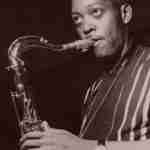Learning language is arguably the most important aspect of learning to improvise. When you start to use the language you’ve worked on in your solos, you start to realize how powerful it truly is. You feel like a whole new perspective has been opened up to you – that you finally understand. But then, over time, this feeling naturally fades…
Instead of feeling like you’ve figured something out, you now feel like all you’re doing is copying and inserting the same few lines, over and over and over.
This can be the most frustrating feeling in the world, especially if you have no idea how to exit this situation and get back to improving.
Where do you go from here?
A reader recently wrote to us describing this very situation. He’s grabbed a lot of lines from recordings that he loves and he’s even learned them in all keys.
The problem: He feels like all he’s doing is copying and pasting language. He’s so frustrated, he writes, that he could cry. Don’t worry. We’ve all been there. This can be incredibly frustrating and push just about anyone to that point.
So, let’s take this one step at a time.
Making language your own
Before we dive into the underlying purpose of language, there is an important step that you should take with all the language you work on. Take the language and make it your own. Review that article and take it to heart.
Get in the habit of asking yourself, “What could I do to this piece of language?”
Experiment, and try to come up with something that you like. The differences do not have to be all that great either. It’s as easy as articulating one or two notes slightly different, or ending the line a little different, or changing a single pitch. Really, it’s not as difficult as you think.
Take one line you’re working on and aim to change it in one way. Make it your own. This is something you do in the practice room, not on stage.
Of course, when you’re truly improvising on stage, you’ll be changing everything you’ve worked on in real-time. But in the practice room, you have the time to think out how you’d modify the line given your own personal preference.
Why is this so important?
Well, it’s very important for a number of reasons. First, this process gives you true flexibility with the line. You learn that the line can act as a springboard for your own creativity, rather than something you reproduce note-for-note all the time. With practice, it becomes easier and easier to modify lines in real-time, making the line an incredibly useful tool during performance.
And secondly, making language your own propels you toward your own style.
If you took every line you transcribed and changed it in a way that reflects what you want to say musically, you couldn’t help but get closer to your true voice, while continuing to speak in the jazz idiom.
Use language to hear the changes
So imagine you’ve made some language your own, what now? Wouldn’t you just be copy-and-pasting these lines now?
Absolutely not.
No matter what language you have amassed, and no matter if you’ve altered it in any way, the secret lies in how you view the purpose of language. What is the purpose of language?
Is it to have phrases to play in any harmonic situation? Is it to know what notes “work” over different chords? Is it to know how to play the notes in terms of articulation and feel?
The answer is yes. Yes, yes, and yes.
Learning language is for all these purposes and many more. Like I said at the beginning of this article, language is arguably the most important aspect of learning this music.
Learning language covers so much ground because you’re learning what to play, how to play, and when to play it, all at once. You can’t get much more direct than that.
But if we change the question slightly, we can arise at something less expected…
What’s the underlying purpose of language? Or to clarify what I want to know, what is the not-so-obvious purpose of language?
In terms of learning language, you’re learning a phrase that has melody and rhythm for a specific harmonic situation. What you’re doing on a deep level is learning how to hear melodic units of information for the various harmonic sounds you will encounter. And not only are you training your ear to hear how these melodies express these various harmonies, you’re teaching your fingers where to access this information.
In other words, you’re learning to hear what you want to play, and you’re learning how to play what you hear. That’s the goal and it’s all right there in the process of transcribing and learning language.
So back to our question, what’s the not-so-obvious purpose of learning language? The not-so-obvious purpose of learning language is to learn to hear a continuous line over any progression.
If you can do this, you can hear every chord, you know where you are in the form of the tune at all times, and you have a constant flow of ideas to play.
You can always have more language, but to reach this point where you have a continuous line flowing through your mind over a blues or another simple form, you actually don’t need a ton of language. Aim to learn less, but more thoroughly and you’ll get there.
Ok, but our friend’s question is still partially hanging. Perhaps he will start to practice making lines his own, but what’s next?
Leaving notes out
Once you understand that learning language is all about getting to this point where you have a continuous line at your disposal, it’s time to learn how to not play everything you hear…
You make decisions. Really really fast ones. In fact, most of them are so spontaneous and intuitive that you’ll barely realize you’re making them.
Rich Perry would always express to me that he’s aware of these decisions while he makes them. He hears a lot more than he plays. What you choose to play and what you choose not to play will define every phrase you play: the actual notes, as well as the space surrounding them.
To answer the reader’s question directly, once you have language at your disposal, stop playing all of it. Or, more precisely, for any given piece of language, allow it to connect to other pieces of language to form a long continuous flow of melodic information running through your mind’s ear in time over the chord changes, and only choose some of what you’re hearing to actually play.
Perhaps over one measure you hear a continuous string of eighth notes, but instead of playing it all, you hear the entire string run through your mind, but only choose to play the first two eighth notes, and maybe the last two, as they connect to the next phrase.
Choose what you bring to life. You hear everything, but only select part of of what you hear to actually play.
Then once you practice hearing everything and only playing pieces of it, allow the pieces you choose to play to vary in the moment as well. This is quite difficult to describe. It’s something you just have to work on and you’ll just get it.
Practice taking a few pieces of language you know really well through a four measure progression. Hear and play one continuous line through these four measures as slowly as you need. Then, hear in your mind’s ear the entire line, but only play one small piece of it. Then try to play two separate small pieces of it. Keep practicing this way until it becomes easy to hear the whole line, but only play parts of it.
And then after that, work on letting the rhythms and melodies change in real-time of the portions of the line that you play, or instead, predetermine these changes in the line, if that makes it easier to practice for you.
The key is to not feel like you have to play everything and learn to intuitively choose parts of the line to play, and parts to exclude. Between this technique and making lines your own with your own style, the uncreative copy-and-paste-mentality will never haunt you again.










